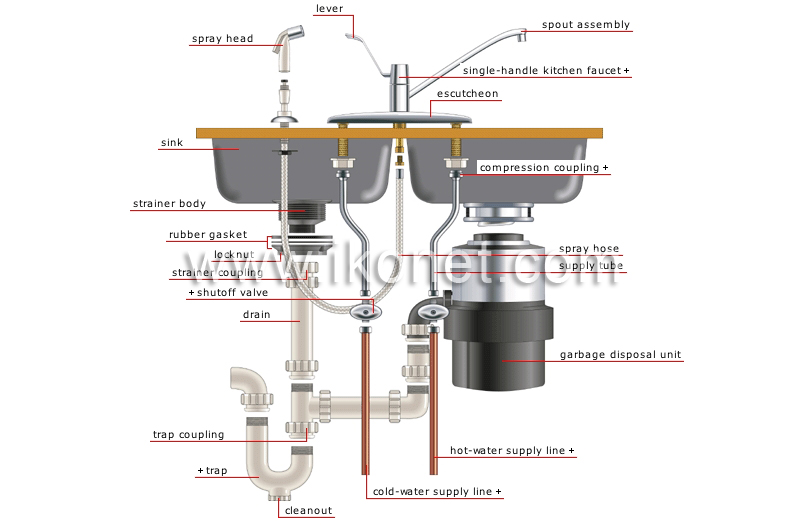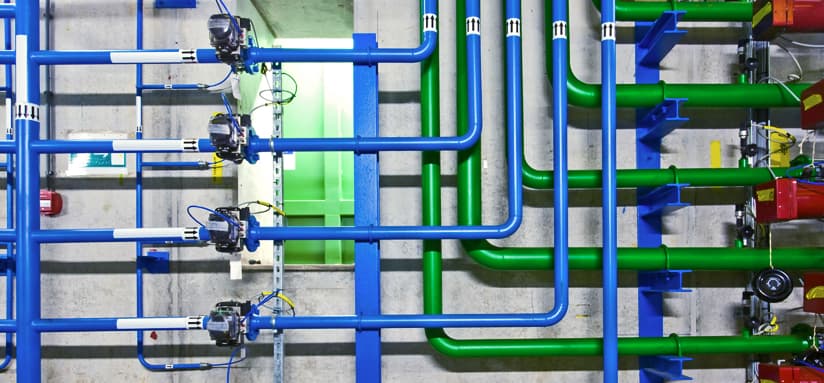Design of Your Home's Plumbing System: What It Matters
Design of Your Home's Plumbing System: What It Matters
Blog Article
What are your opinions about Anatomy of a House: Understanding the Components?

Comprehending just how your home's pipes system functions is essential for every single property owner. From providing tidy water for alcohol consumption, food preparation, and bathing to securely eliminating wastewater, a well-kept plumbing system is important for your household's wellness and convenience. In this detailed overview, we'll check out the complex network that comprises your home's pipes and deal suggestions on maintenance, upgrades, and dealing with common issues.
Introduction
Your home's plumbing system is more than just a network of pipes; it's a complex system that ensures you have access to clean water and efficient wastewater removal. Knowing its parts and just how they work together can help you protect against pricey fixings and make certain whatever runs smoothly.
Basic Components of a Plumbing System
Pipelines and Tubes
At the heart of your plumbing system are the pipes and tubing that carry water throughout your home. These can be constructed from numerous materials such as copper, PVC, or PEX, each with its advantages in terms of resilience and cost-effectiveness.
Components: Sinks, Toilets, Showers, and so on.
Components like sinks, toilets, showers, and bath tubs are where water is utilized in your house. Recognizing exactly how these fixtures connect to the plumbing system aids in diagnosing problems and intending upgrades.
Valves and Shut-off Points
Valves control the circulation of water in your plumbing system. Shut-off shutoffs are essential during emergency situations or when you require to make repair services, enabling you to isolate parts of the system without interfering with water flow to the whole home.
Water System System
Main Water Line
The primary water line links your home to the community water supply or a personal well. It's where water enters your home and is distributed to numerous fixtures.
Water Meter and Stress Regulator
The water meter measures your water use, while a pressure regulatory authority guarantees that water flows at a risk-free pressure throughout your home's plumbing system, protecting against damage to pipelines and fixtures.
Cold Water vs. Warm water Lines
Comprehending the difference in between cold water lines, which supply water directly from the primary, and warm water lines, which bring heated water from the hot water heater, assists in troubleshooting and preparing for upgrades.
Drain System
Drain Piping and Traps
Drain pipes lug wastewater away from sinks, showers, and toilets to the drain or septic tank. Catches prevent drain gases from entering your home and additionally trap particles that could trigger blockages.
Air flow Pipes
Air flow pipelines enable air right into the drainage system, avoiding suction that might slow drain and create traps to vacant. Proper air flow is essential for preserving the integrity of your plumbing system.
Importance of Appropriate Water Drainage
Making certain proper water drainage prevents backups and water damages. Regularly cleaning up drains and keeping catches can avoid expensive repairs and prolong the life of your plumbing system.
Water Furnace
Sorts Of Water Heaters
Hot water heater can be tankless or typical tank-style. Tankless heating systems warmth water as needed, while tanks store heated water for instant use.
Updating Your Pipes System
Reasons for Upgrading
Updating to water-efficient components or replacing old pipes can enhance water quality, reduce water expenses, and enhance the worth of your home.
Modern Plumbing Technologies and Their Advantages
Discover technologies like wise leakage detectors, water-saving commodes, and energy-efficient hot water heater that can conserve money and decrease environmental impact.
Cost Considerations and ROI
Determine the upfront costs versus long-lasting savings when thinking about pipes upgrades. Several upgrades spend for themselves via reduced utility bills and fewer repair work.
How Water Heaters Connect to the Pipes System
Recognizing just how hot water heater attach to both the cold water supply and warm water circulation lines aids in detecting problems like inadequate hot water or leaks.
Maintenance Tips for Water Heaters
On a regular basis purging your hot water heater to eliminate debris, inspecting the temperature level settings, and checking for leakages can prolong its life expectancy and improve power performance.
Typical Pipes Problems
Leaks and Their Causes
Leakages can take place as a result of maturing pipelines, loose fittings, or high water pressure. Addressing leakages immediately avoids water damages and mold and mildew development.
Blockages and Obstructions
Clogs in drains and toilets are usually triggered by flushing non-flushable items or a buildup of oil and hair. Utilizing drain displays and bearing in mind what decreases your drains can prevent obstructions.
Indicators of Plumbing Problems to Look For
Low water stress, sluggish drains, foul odors, or abnormally high water expenses are signs of possible plumbing problems that need to be dealt with promptly.
Pipes Maintenance Tips
Normal Evaluations and Checks
Set up yearly plumbing inspections to capture issues early. Try to find indications of leaks, deterioration, or mineral accumulation in faucets and showerheads.
Do It Yourself Maintenance Tasks
Straightforward tasks like cleaning tap aerators, checking for toilet leaks using color tablets, or insulating subjected pipes in cool climates can protect against major pipes issues.
When to Call a Specialist Plumbing Technician
Know when a plumbing problem requires expert proficiency. Trying complicated fixings without appropriate knowledge can result in even more damage and greater repair work prices.
Tips for Reducing Water Usage
Straightforward behaviors like repairing leakages without delay, taking shorter showers, and running full lots of laundry and recipes can preserve water and lower your utility costs.
Eco-Friendly Plumbing Options
Think about lasting plumbing products like bamboo for flooring, which is durable and environment-friendly, or recycled glass for kitchen counters.
Emergency Preparedness
Actions to Take Throughout a Plumbing Emergency situation
Know where your shut-off valves are located and exactly how to shut off the water supply in case of a burst pipeline or major leak.
Relevance of Having Emergency Situation Get In Touches With Helpful
Keep get in touch with details for neighborhood plumbers or emergency solutions easily offered for quick reaction throughout a pipes crisis.
Environmental Influence and Preservation
Water-Saving Fixtures and Home Appliances
Mounting low-flow taps, showerheads, and toilets can substantially lower water use without sacrificing performance.
DIY Emergency Fixes (When Suitable).
Short-lived fixes like utilizing duct tape to patch a dripping pipe or putting a pail under a trickling tap can minimize damage until an expert plumbing technician shows up.
Verdict.
Recognizing the makeup of your home's pipes system encourages you to maintain it effectively, saving time and money on fixings. By adhering to normal upkeep regimens and remaining educated concerning contemporary pipes innovations, you can ensure your plumbing system operates efficiently for several years ahead.
Understanding Your Home Plumbing System: A Comprehensive Guide
Plumbing System: The Lifeline of Your Home
At its core, the plumbing system is designed to perform two primary functions: bring fresh water into your home and remove wastewater. The system is a network of pipes, fixtures, and other components that transport water and sewage. Residential plumbing systems include potable water supply lines, drain-waste-vent (DWV) systems, and various plumbing fixtures that make water use in daily tasks possible.
Key Components:
Water Supply: This part of your plumbing system brings municipal water into your home, passing through the main water supply line. It s responsible for supplying all water needs, from drinking to bathing.
Drainage System: It carries waste and water away from your home to the sewer or septic system. This system includes all the piping within your home that leads to external sewage or septic systems.
Vent System: An essential yet often overlooked component, the vent system allows sewer gases to escape and lets air into the drainpipes, ensuring water and waste move correctly through the system.
Fixture: More Than Just Taps and Toilets
Plumbing fixtures are the most interactive parts of the plumbing system, including faucets, showers, toilets, and sinks. Each fixture is connected to the plumbing system and plays a role in either the delivery of freshwater or the disposal of waste and wastewater.
Types of Fixtures:
Faucets and Sinks: Used for washing hands, dishes, and other daily water needs. Toilets: Dispose of human waste through the sewage system. Bathtubs and Showers: Provide bathing facilities, requiring both hot and cold water supply. Water Supply: The Source of Life
The water supply system is a critical component, ensuring that potable water is available throughout your home for various uses, including drinking, cooking, and cleaning. This system consists of pipes that distribute water to different parts of the house, controlled by valves to regulate the water flow.
Types of Plumbing: Materials and Methods
Various types of plumbing systems and materials are used in residential settings, each with its advantages and applications. From copper and PVC pipes for water supply to cast iron and ABS for drainage, the choice of materials can impact the longevity and efficiency of your plumbing system.
https://intownplumbingtx.com/articles/home-plumbing-system-guide/

As an avid reader about The Inner Workings of Your Home's Plumbing, I think sharing that excerpt was worth the trouble. If you appreciated our blog post kindly make sure you remember to pass it around. I love reading our article about Exploring Your Homes Plumbing Anatomy.
Click Report this page